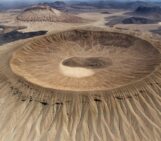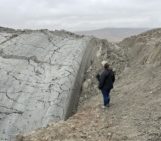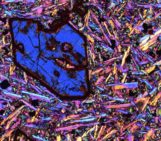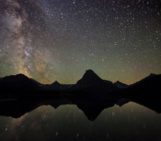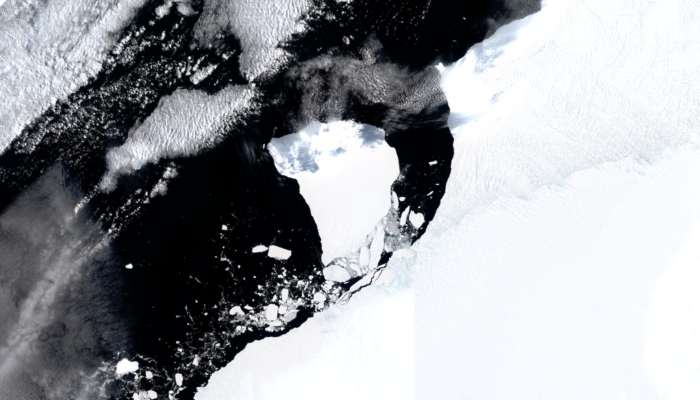
Information from a British Antarctic Survey Press Release.
A huge iceberg (1550 km²), almost the size of Greater London, has broken off the 150m thick Brunt Ice Shelf. It calved after cracks that have been developing naturally over the last few years extended across the entire ice shelf, causing the new iceberg to break free. This occurred on Sunday 22 January between 19.00 and 20.00 UTC during a spring tide.
The iceberg calved when the crack known as Chasm-1 fully extended through the ice shelf. The break off is the second major calving from this area in the last two years and has taken place a decade after scientists at British Antarctic Survey (BAS) first detected growth of vast cracks in the ice.
The Brunt Ice Shelf is the location of BAS Halley Research Station. BAS glaciologists, who have been monitoring the behaviour of the ice shelf, say that the area of the ice shelf where the research station is located currently remains unaffected by the recent calving events.
The glaciological structure of the Brunt Ice Shelf is complex, and the impact of calving events is unpredictable. In 2016, BAS took the precaution of relocating Halley Research Station 23 km inland of Chasm-1 after it began to widen.
Since 2017, staff have been deployed to the station only during the Antarctic summer (between November to March). Currently 21 staff are on station working to maintain the power supplies and facilities that keep the scientific experiments operating remotely through the winter. Their work will continue until they are collected by aircraft around 6 February.
Satellite image from Sentinel-2 of Iceberg A-81. Contains modified Copernicus Sentinel data [2023], processed by Niklas Jordan.
Photo and caption by Niklas Jordan, shared on imaggeo.egu.eu.
Imaggeo is the EGU’s online open access geosciences image repository. All geoscientists (and others) can submit their photographs and videos to this repository and, since it is open access, these images can be used for free by scientists for their presentations or publications, by educators and the general public, and some images can even be used freely for commercial purposes. Photographers also retain full rights of use, as Imaggeo images are licensed and distributed by the EGU under a Creative Commons licence. Submit your photos at http://imaggeo.egu.eu/upload/.

